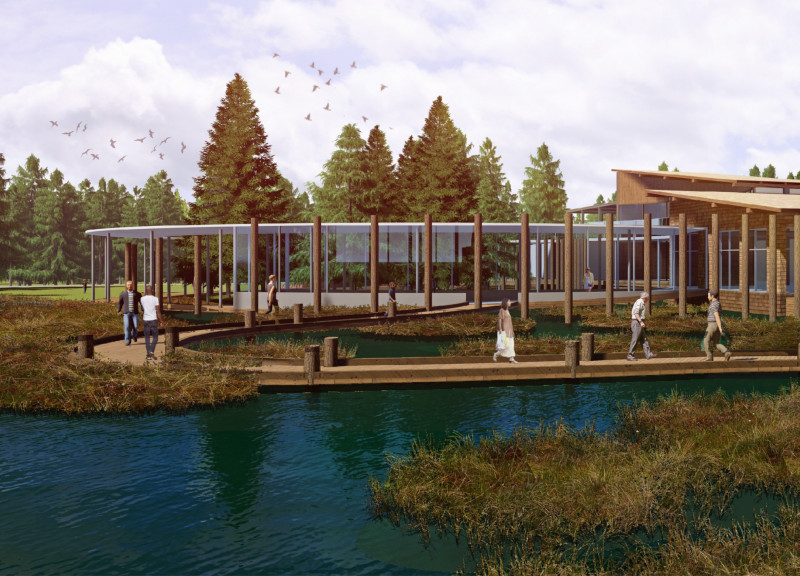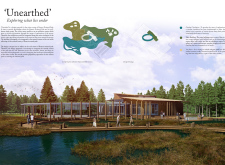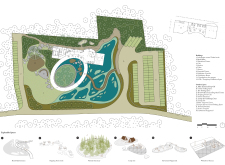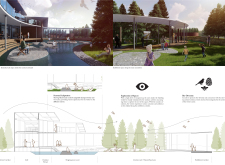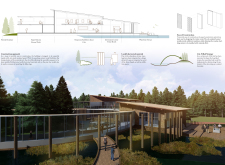5 key facts about this project
The visitor center at Kemeri National Park is positioned within a landscape defined by its distinctive bog terrain. The project is designed to serve as an educational and exploratory hub for visitors, allowing them to engage with the unique natural features of the park. The focus is on promoting interaction and creating a welcoming space that enhances the overall experience for those exploring this remarkable environment.
Spatial Organization
The layout of the visitor center includes key facilities such as an information center, café, restrooms, and exhibition areas. Each space is arranged thoughtfully to improve visitor accessibility and ensure smooth movement throughout the center. A circular path of circulation allows visitors to navigate through various exhibits, encouraging curiosity and providing opportunities for learning about the park as they explore.
Materiality
Material choices highlight a connection to the local context and emphasize sustainability. The façade features wooden shingles and wood cladding, elements that are inspired by traditional Latvian architecture. Locally sourced pine logs are used for a log fence, which helps to blend the building into the landscape. This choice enhances the sense of place and provides a natural boundary that mirrors the park’s surroundings.
Outdoor Experience
The design of outdoor spaces enhances the connection between visitors and the natural environment. Important features include a main entrance with drop-off facilities, ample parking spaces, and a boardwalk leading into the bog-like terrain. The stepping stone café acts as a social spot for visitors to pause and take in their surroundings. Each outdoor element aims to create an immersive experience, encouraging visitors to connect with the ecological characteristics of Kemeri National Park.
Large openings throughout the building allow natural light to enter, creating a bright atmosphere inside. These openings also provide views of the surrounding landscape, fostering a strong connection between the interior and the outdoor environment. This design detail enhances the visitor's experience, making it easier to appreciate the beauty of the park while inside the center.


